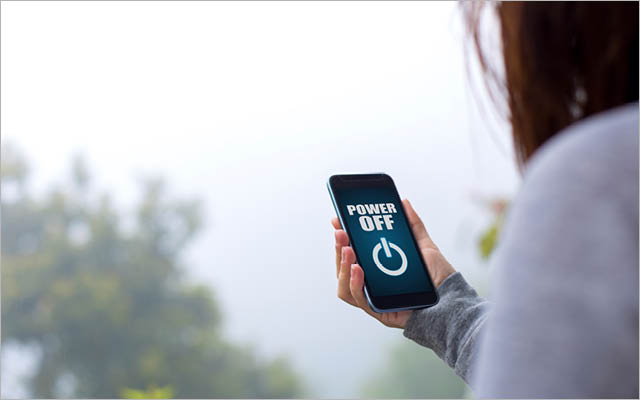Chatting over lunch the other day with one of my young colleagues, we somehow landed on the topic of typewriters. I had mentioned that I learned to hunt and peck on a clunky manual model eons ago in high school and wondered whether schoolkids still grappled with the fundamentals of the classic keyboard. They’re still learning to type, she reported, and at a much earlier age. But you won’t hear the clackety-clack of a vintage Royal anywhere.
That makes perfect sense, of course: Laptops long ago displaced the stoic Underwoods and snazzy Smith Coronas as the preferred tools of written communication. And, though part of me misses the momentary sense of achievement that occurred whenever I reached the end of a line — ding! — and yanked the carriage back to the right, I sometimes wonder how I ever hit a deadline back in the day.
I’ve been staring at computer screens as part of my typical workday since the mid-’80s and can’t imagine putting together a newspaper or magazine without the cold efficiency these devices bring to the process. So, I was struck by recent research suggesting our reliance on these digital wonders may be making us old before our time.
It’s all about the blue light our laptops, phones, and TVs emit, explains Jadwiga Giebultowicz, PhD, a professor of integrative biology at Oregon State University (OSU), whose team concluded that too much exposure to this type of light can cause cellular dysfunction and accelerate the aging process. “We are the first to show that the levels of specific metabolites — chemicals that are essential for cells to function correctly — are altered in fruit flies exposed to blue light,” Giebultowicz says.
Drosophila melanogaster is not human, of course, but the common fruit fly has long been a useful tool for biomedical research. In this case, we happen to share the same signaling chemicals as the pesky insect, which makes the results of Giebultowicz’s study more applicable than it may appear at first glance.
OSU researchers had earlier discovered that flies respond to normal light by switching on genes that ease stress, so they were curious to learn how they would react to blue light. They separated the flies into two groups — one was exposed to blue light for two weeks while the other was kept in complete darkness — before comparing the presence of certain metabolites that promote cellular function in each group.
The flies exposed to blue light contained higher levels of succinate, a metabolite that produces the fuel needed for essential cell function, and lower levels of glutamate, which helps neurons talk to each other. “High levels of succinate after exposure to blue light can be compared to gas being in the pump but not getting into the car,” Giebultowicz explains. “Another troubling discovery was that molecules responsible for communication between neurons, such as glutamate, are at a lower level after blue light exposure.”
It all adds up to damaging shifts in energy and amino acid metabolism along with general neurodegeneration — a recipe for accelerated aging.
More research is necessary before any strong conclusions can be drawn, Giebultowicz admits. We are typically exposed to much weaker blue light than her flies encountered, for one thing. And none of this research has been conducted using human cells. Meanwhile, most of our screens come equipped with blue-light filters that lower our exposure, so the time I spent writing this piece — and the time you spent reading it — may not necessarily hasten our inevitable demise.
I hope so, anyway. I’d feel terrible if I discovered my prose was aging readers prematurely rather than simply putting them to sleep. Plus, I’m not at all prepared to crank out my next column on a Smith Corona.





This Post Has 0 Comments